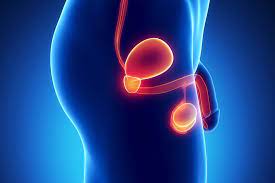Prostatitis is inflammation of the prostate gland, a walnut-sized gland that produces seminal fluid. Prostatitis is common and affects many men at some time. Symptoms of prostatitis include difficulty urinating, frequent urination, pain in the lower back and groin region.
The condition can be treated with antibiotics, alpha blockers and pain relievers.
More: Male infertility linked to prostate cancer risk

Types of Prostatitis
Types of prostatitis include:
Acute bacterial prostatitis (category 1): A UTI causes an infection in the prostate gland. Symptoms include fever and chills. You may experience painful and frequent urination or have trouble urinating. Acute bacterial prostatitis requires immediate medical treatment.
Chronic bacterial prostatitis (category 2): Bacteria become trapped in the prostate gland, causing recurrent UTIs that are difficult to treat.
Chronic pelvic pain syndrome, or CPPS (category 3): CPPS is the most common prostatitis type. Prostate gland inflammation occurs in approximately 1 out of 3 men. As the name implies, this type causes chronic pain in the pelvis, perineum (the area between the scrotum and rectum) and genitals.
Asymptomatic inflammatory prostatitis (category 4): This condition causes prostate gland inflammation but no symptoms. You may learn you have this condition after getting tests to find the cause of other problems. For example, a semen analysis for infertility may detect asymptomatic inflammatory prostatitis. This type doesn’t need treatment.
Causes of Prostatitis
Different types of prostatitis have different causes. Risk factors for chronic pelvic pain syndrome (CPPS), the most common type, aren’t clear. Potential contributors to CPPS include:
- Autoimmune diseases.
- Pelvic floor muscle spasms.
Potential causes of bacterial forms of prostatitis include:
- Bladder infections or bladder stones.
- Surgery or biopsy requiring use of a urinary catheter.
- Prostate stones.
- Urinary retention (not emptying the bladder completely).
Symptoms of Prostatitis
Prostatitis symptoms vary depending on the type and cause. People with asymptomatic inflammatory prostatitis don’t have any symptoms. Men with chronic pelvic pain syndrome or chronic bacterial prostatitis may experience:
- Pain in the penis, testicles or perineum (area between the testicles and rectum). The pain may radiate to the lower back.
- Frequent urge to urinate.
- Painful urination (dysuria).
- Weak urine flow or urine stream that starts and stops.
- Painful ejaculation or pain during intercourse.
- Blood in semen (hematospermia).
- Erectile dysfunction.
- Acute bacterial prostatitis causes a fever and chills.
Treatment of Prostatitis
There are a range of treatment options for prostatitis depending on the cause of the condition. These include:
- Antibiotics: This is prescribed for prostatitis due to bacterial infection.
- Alpha-blockers: These drugs help relax parts of the urinary tract. They help reduce obstruction from an enlarged prostate,. Urinary obstruction predisposes to UTIs and prostatitis.
- Pain medicine: Anti-depressants or anti-seizure medications are just two types of medicine that can be used to treat long-term prostate pain.


